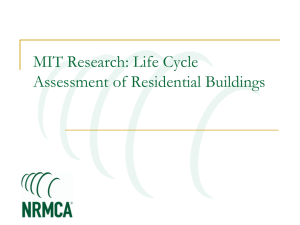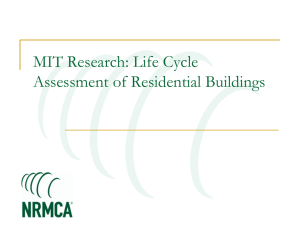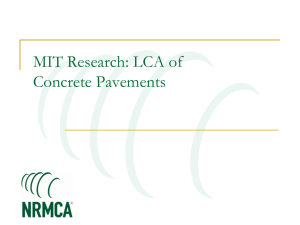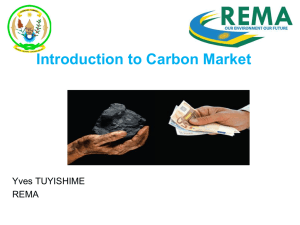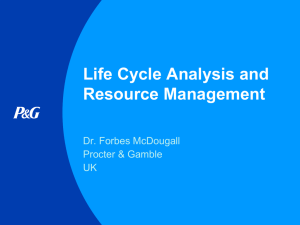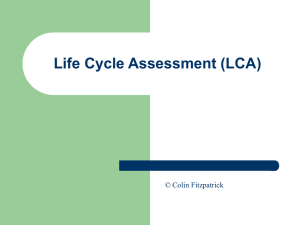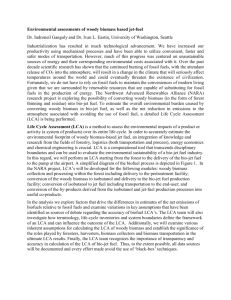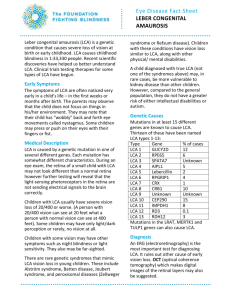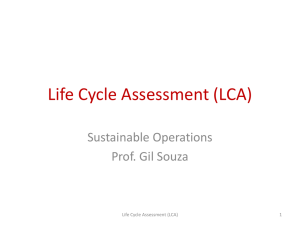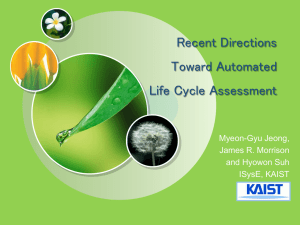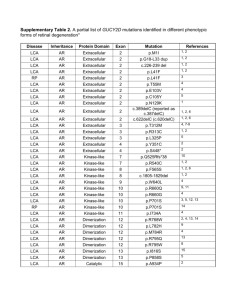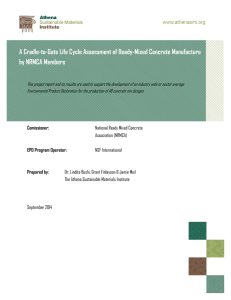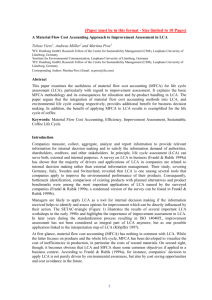LCA of Commercial Buildings - National Ready Mixed Concrete
advertisement
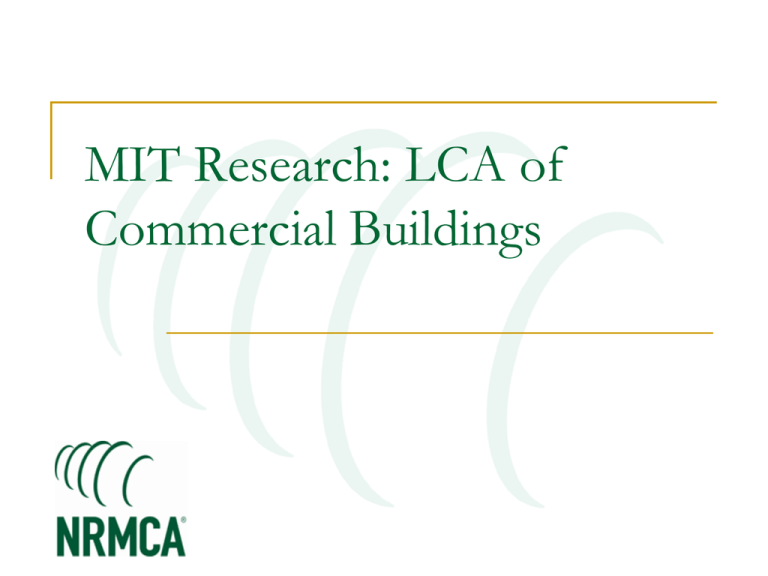
MIT Research: LCA of Commercial Buildings MIT Concrete Sustainability Hub $10 million investment over 5 years Funded equally by RMCREF & PCA NRMCA providing technical support and guidance NRMCA and state associations to play a critical role in the technology transfer Goals Identify areas in which concrete excels Identify opportunities for improvement Create solid technical basis for future industry development 3 Research Platforms Concrete Science Platform: Mission Scientific breakthroughs toward reducing CO2 footprint of cement and concrete Strength with less material Lower energy processing Chemical stability Building Technology Platform Mission: Life Cycle Assessment (LCA) of Concrete Buildings and Pavements to Identify Impacts and Opportunities Research Topics: Material Flow Analysis LCA of commercial buildings LCA of residential buildings LCA of pavements LCCA of building materials Commercial Buildings (Source: DOE) Methodology Standardized LCA methodology critical Increase consistency of LCA MIT proposes good practices for LCA Methodology Transparency of data Define scope Identify system boundaries Define functional unit Goal and Scope Investigate the role of thermal mass in reducing carbon emissions Quantify energy advantages of concrete due to thermal mass Identify potential areas for improvement in life cycle emissions LCA Model GaBi software to conduct the LCA EnergyPlus for energy simulations, and. Boundaries Functional Unit 12 stories 498,590 ft2 Phoenix Concrete Steel Chicago Life Cycle Inventory Data Databases collected by PE International U.S. Life Cycle Inventory database (USLCI) Portland Cement Association (PCA) World Steel (USLCI 2009) Manufacturers Life Cycle Duration Operating energy for 60-year life cycle Global warming potential (CO2e) quantified for several purposes Benchmarking emissions of current construction practices Comparing impacts of concrete versus steel Understand relative magnitude of relative impacts of different life cycle phases Impacts Global Warming Potential Embodied Energy, 5% Operating Energy, 95% Embodied Emissions Operational Energy Life Cycle Emissions (60 years) Life Cycle Emissions (75 years) Regional Variation Has significant impact on the life cycle Assuming 60-year lifetime Difference in GWP between Chicago and Phoenix is approximately 23% Transportation distances are negligible over the total life cycle HVAC have 15% impact in the operational energy use Impact Reductions: Structural System Recommendations made to reduce GWP GWP could change slightly if different structural systems were implemented Change GWP by a small percentage GWP would still be similar to steel frame Impact Reductions: Mix Design More efficient mix designs Increased use of SCMs Fly ash Slag cement Silica Fume Increasing fly ash from 10% to 25% Decrease pre-use embodied GWP 4.3% 0.18-0.25% reduction of total GWP for 60year life span Impact Reductions: Lighting Controls Strategies studied: Façade systems Shading systems Building massing Daylighting yielded greatest reductions 71% in perimeter zone lighting by using sensors and dimmers Impact Reductions: Passive Solar High thermal capacity Shift energy loads Reduce peak demand Reduce operational energy Energy savings of 5-15% Impact Reductions: Low-lift Cooling Pre-cool concrete with embedded chilled water pipes Use efficient lo-lift chillers Saves 37-84% over DOE benchmark buildings More Information Full report available from MIT Concrete Sustainability Hub at web.mit.edu/cshub. MIT Hub established by RMC Research & Education Foundations Portland Cement Association NRMCA providing technical support Transfer research into practice Visit www.nrmca.org Online Resources www.nrmca.org/sustainability web.mit.edu/cshub www.greenconcrete.info www.concretepromotion.org www.rmc-foundation.org Thank You
